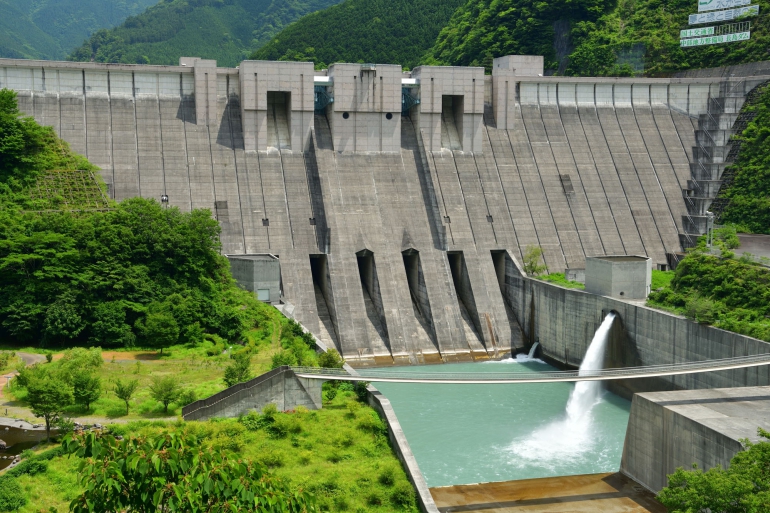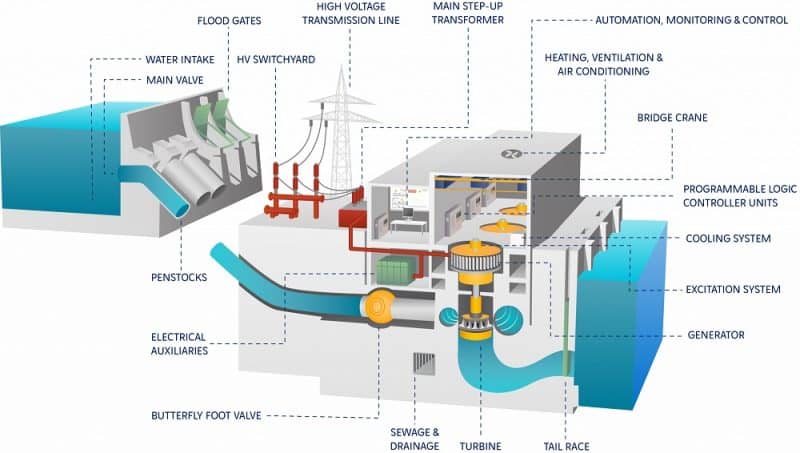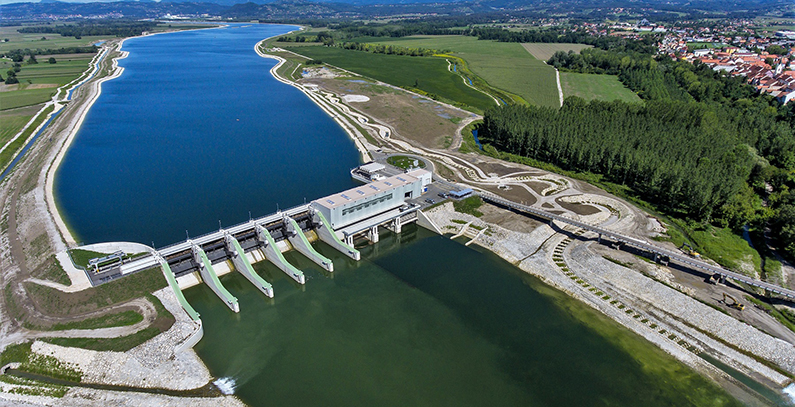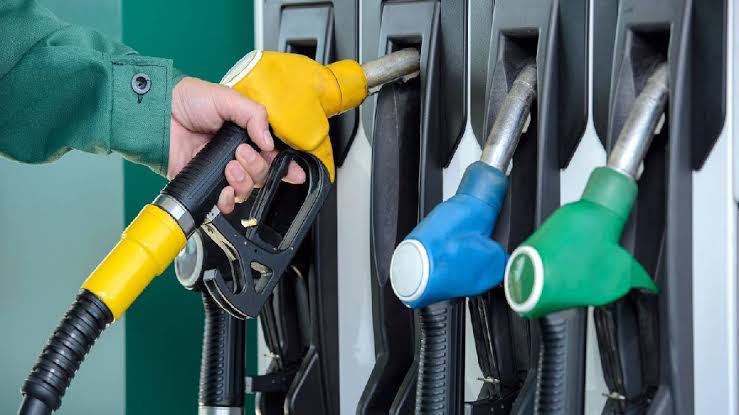What is a Hhydroelectric power plant, Types of Hydropower Plant and What are its Benefits and Disadvantages?

HPP is short for the Hydroelectric Power Plant. The HPP provide energy from the water power. The HPP are structures that build into streams and transform the energy of fast-flowing water into electrical energy, and are often built in dam lakes.

What is a Hhydroelectric Power Plant (HPP)
• Potential of some height-enhanced fluid (waterits) energy is called hydraulic energy.
• This energy is first used by various mechanisms, mechanical energy, and then electricityto the new electrical energy achieved by converting to energyit’s called hydroelectric energy.
• In short, water that has gained a certain level of natural or artificial water is lowerit is transmitted to turbines at level 1, the water that hits the turbine wheels at a great speed,turns turbine shaft and therefore turns generator on and electricalit’ll be manufactured.
• The places where these devices are made are dams.
• The facilities where this transformation is made are called hydroelectric power plants by its general name.

Types of Hydropower Plant (HPP)
• To the properties of the water on which they are installed, to the height of the water shower, to the damproduction material, plant capacity, plant construction site and productionwe can diversify energy by character and value. Hydroelectricdepending on the nature of the water on which the plants are installed;
1.Run of River (RoR) Type (without dam) Hydroelectric Power Plants
No dam to generate electricity. By taking the stream into a channel or tunnela certain slope is earned. The turbine is built on the channel, like a bridge.The turbine shaft of the stream where the dam-free hydroelectric power plants are to be installedto the potential that can be converted and the minimum electricity production of its annual flowthere should be enough.
2.Reservoir (Storage, Dam) Type Hydroelectric Power Plants
By making dams on the River, a large artificial lake is first created and water is hereit’s collected. This water has a certain potential energy. So, even in the years that the droid has passedelectricity can be produced in hydroelectric power plants. Most commonly used hydroelectric plant in the worldit’s a variety.
3.Hydrokinetic Type Hydroelectric Power Plant
This technology is less developed and less used than the other three but offers the promise to extend the range of possible sites for hydropower development to rivers and canals where it can harness energy directly from flowing water, rather than from a hydraulic head created by dams or other control structures.

Benefits of Hydropower Plants
- With HPP installation, water in the streams is prevented from flowing to waste, and this flow is transformed into energy, benefiting humanity.
- HPP’s are defined as environmentally friendly by UNESCO and the European Union. Creating new appetites in the areas where they are installed, HPP’s also provide the development of that region.
- HPP projects also contribute to the economy of the region that is planned to be created and reduce foreign dependency.
- The Hydroelectric Power Plant does not create waste, so it does not pollute the environment. In addition, HPP are renewable, clean structures that deliver high productivity. Long-term life is also reciprocated in the short term for investments in HPP’s.
- Being a local resource, low cost and environmentally friendly makes HPP an important resource. It also helps reduce external dependency, as it will bring economic independence with it.
Disadvantages of Hydropower Plants
1)Relocation due to risk of floods
Local populations living downstream can become vulnerable to flooding due to the possible strong water currents that might flow from the dams. As a result, people have to relocate to facilitate the construction of the dam needed to generate hydroelectricity. The World Commission on Dams estimated in 2000 that dams had physically displaced 40-80 million people worldwide.
2)High construction costs
Hydroelectric power plants and dams can be incredibly expensive to construct. Moreover, the projects take long periods to finish and will have to operate for a long time too to recover the money spent on construction. Compared to the falling prices of solar installations, for example, hydropower is a more challenging renewable project to finance.
3)Environmental impact
Interruptions of natural water flow can have an immense impact on the environment and the river ecosystem. Hydropower facilities can affect land use, riverine valley forests, marshlands, and grasslands in the dam area. Reservoirs may cover people’s homes, important natural areas, agricultural land, and archaeological sites.Areas that previously have been covered by water may dry up, and those that have been dry may water cover them. In turn, many animals and plant species may be confused due to these changes in natural living conditions, which may lead to a decrease of those species and may also lead to an imbalance in local ecosystems.




